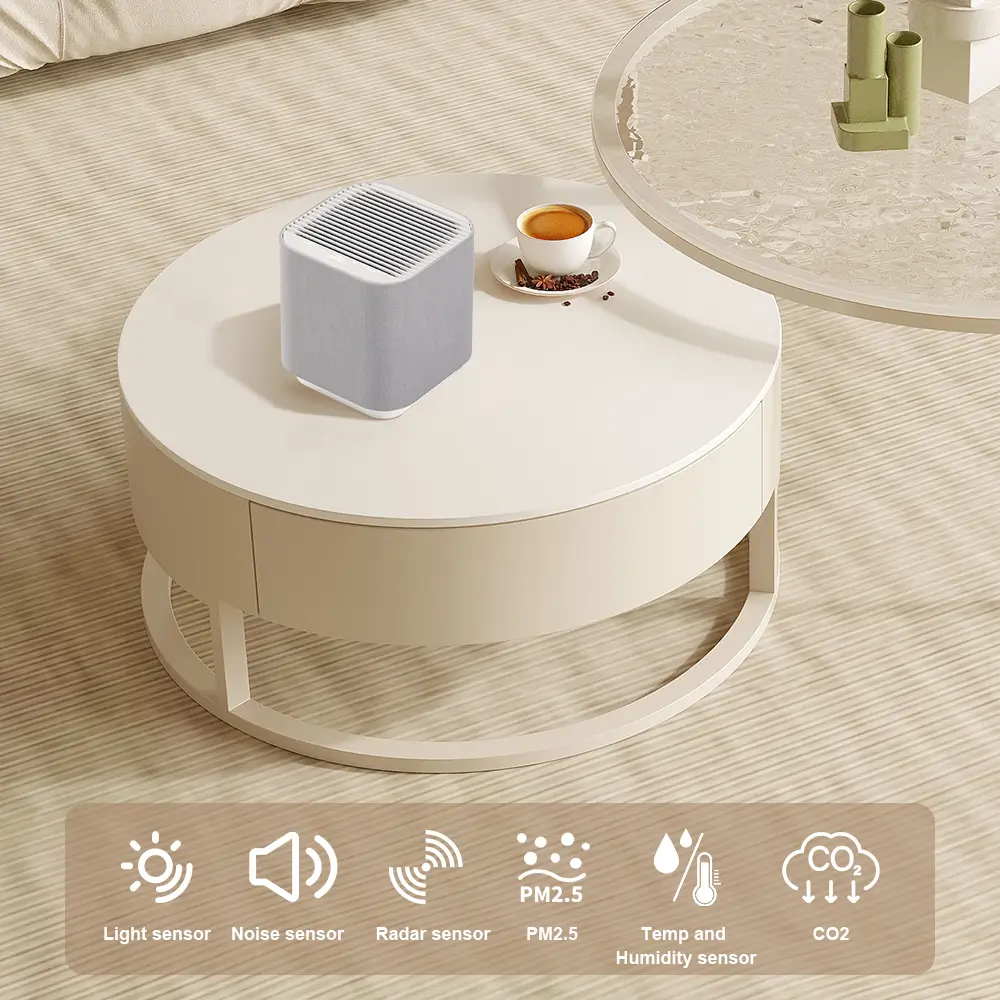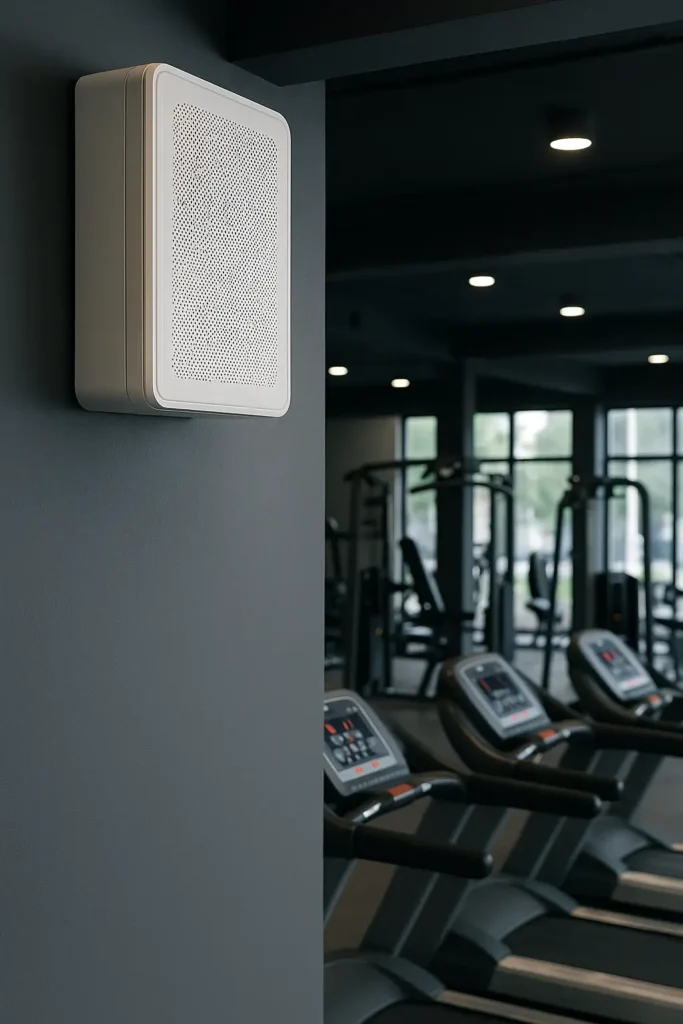La fabricación de un purificador de aire implica una serie de intrincados pasos, desde la investigación y el desarrollo (I+D) hasta las pruebas de calidad y la producción en serie. A medida que la contaminación del aire y los contaminantes de interiores se convierten en un problema de salud mundial, la demanda de purificadores de aire eficaces sigue creciendo. Este artículo ofrece una guía completa sobre la fabricación de purificadores de aire, con especial atención a los procesos eficaces, las tecnologías necesarias y el cumplimiento de la normativa.
Índice
- Introducción
- ¿Qué es un purificador de aire?
- Componentes clave de un purificador de aire
- Proceso de fabricación de un purificador de aire
- El papel de la CFD y los ventiladores de alto rendimiento en la eficiencia de los purificadores de aire
- Principales tecnologías e innovaciones en filtración
- Comparación de las tecnologías de filtración
- Medidas detalladas de control de calidad
- Retos comunes en la fabricación de purificadores de aire
- Conclusión
Introducción
En una época en la que la calidad del aire está cada vez más relacionada con la salud, los purificadores de aire desempeñan un papel crucial en la reducción de contaminantes en interiores como alérgenos, esporas de moho y compuestos orgánicos volátiles (COV).1. Este artículo analiza el proceso integral de fabricación de purificadores de aire, los componentes esenciales y las consideraciones relativas a la calidad y la conformidad del producto.
¿Qué es un purificador de aire?
Un purificador de aire es un dispositivo diseñado para eliminar los contaminantes del aire, mejorando la calidad del aire interior.2 en hogares, oficinas e instalaciones médicas. El objetivo principal de un purificador de aire es filtrar los contaminantes que pueden provocar problemas respiratorios y otros problemas de salud.3. Existen varios tipos de purificadores de aire, desde filtros HEPA hasta dispositivos avanzados de ionización y UV-C, cada uno de ellos adaptado a diferentes necesidades y entornos.4.
Componentes clave de un purificador de aire
Los purificadores de aire vienen con varios componentes, cada uno de los cuales cumple una función específica5. Los componentes principales son:
- Filtros HEPA: Atrapa el 99,97% de partículas de hasta 0,3 micras, incluidos alérgenos, polen y polvo6.
- Filtros de carbón activado: Absorbe gases y olores, como COV, humo de tabaco y olores de cocina7.
- Conjunto de ventilador y motor: Garantiza el flujo de aire a través del filtro, fundamental para una purificación eficaz. Los ventiladores de alto rendimiento son esenciales para equilibrar el flujo de aire con la reducción del ruido, un reto clave en la fabricación de purificadores de aire...8.
- Panel de control: Permite a los usuarios controlar la velocidad, el temporizador y los ajustes de modo.
Proceso de fabricación de un purificador de aire
El proceso de fabricación de purificadores de aire puede dividirse en cuatro etapas principales: estudio de mercado y diseño, selección de componentes, montaje y pruebas, y control de calidad.
1. Estudio y diseño del mercado
El estudio de mercado es esencial para comprender al público objetivo y las tendencias actuales en tecnología de purificación del aire. Las empresas evalúan las preferencias de los consumidores y los productos de la competencia para diseñar un purificador que cumpla o supere las expectativas del mercado9. Los principales ámbitos de interés son:
- Necesidades de los consumidores: Identificar las principales preocupaciones, como el nivel de ruido, la vida útil del filtro y el tamaño.
- Análisis de la competencia: Estudiar a los líderes del mercado y analizar sus características para lograr la diferenciación10.
- Factores medioambientales: Evaluar factores como los tipos típicos de contaminantes en los mercados objetivo (por ejemplo, polen en zonas urbanas o COV en entornos industriales).
Objetivos de diseño: Reducción del impacto de la unidad en la vida cotidiana mediante el diseño de modelos más silenciosos con técnicas innovadoras de reducción de ruido (por ejemplo, Decibel Cancellation™) y circulación de aire.
2. Selección de componentes
Una vez finalizado el diseño, el siguiente paso fundamental es seleccionar componentes de calidad. En el caso de los purificadores de aire, los componentes esenciales son los filtros HEPA, las capas de carbón activado, los motores de los ventiladores y las carcasas11. Las empresas deben dar prioridad a los componentes de alta durabilidad y eficacia para garantizar la calidad y longevidad del producto.12.
| Componente | Descripción | Función clave |
|---|---|---|
| Filtro HEPA | Elimina las partículas finas del aire | Filtración de partículas |
| Carbón activado | Absorbe COV y olores | Filtración de gases y olores |
| Ventilador de alto rendimiento | Equilibra el flujo de aire y el ruido | Control del flujo de aire y del ruido |
| Panel de control | Permite ajustar la velocidad y el modo | Interfaz de usuario y control |
3. Montaje y pruebas
Durante el montaje, los componentes se integran en la carcasa del purificador de aire de acuerdo con las especificaciones de diseño13. El control de calidad es primordial en esta fase para garantizar que todos los componentes funcionan correctamente y que la depuradora cumple las normas de seguridad.
- Pruebas de nivel de ruido: Gracias a la tecnología Decibel Cancellation™, los niveles de ruido se optimizan para garantizar un funcionamiento silencioso adecuado para entornos domésticos y de oficina.14.
- Pruebas de caudal de aire: Las pruebas se realizan para confirmar que el caudal de aire limpio (CADR) cumple las especificaciones del producto, garantizando un equilibrio eficaz entre la velocidad del ventilador y la filtración.15.
Los purificadores de aire con filtros HEPA mejoran considerablemente la calidad del aire interior.Verdadero
Los filtros HEPA capturan el 99,97% de las partículas, lo que hace que los purificadores de aire sean muy eficaces en el control de la contaminación.
4. Control de calidad y certificación
El control de calidad incluye una serie de pruebas rigurosas para confirmar que cada unidad cumple las normas del sector. Los purificadores de aire están sujetos a certificaciones como las normas CE, AHAM y HEPA para garantizar su seguridad y eficacia. Un aspecto crucial es asegurarse de que el CADR se encuentra dentro del rango objetivo para cada tipo de producto, ya que un CADR más alto indica la capacidad del purificador para limpiar el aire con eficacia.16.
Todos los filtros HEPA eliminan eficazmente los olores y los COV.Falso
Los filtros HEPA capturan las partículas, no los gases; sólo los filtros de carbón activo absorben los COV.
El papel de la CFD y los ventiladores de alto rendimiento en la eficiencia de los purificadores de aire
Un ventilador de alto rendimiento y bajo nivel sonoro es fundamental en la fabricación de purificadores de aire para mantener un flujo de aire óptimo a través de los filtros y minimizar el ruido.17. La dinámica de fluidos computacional (CFD) desempeña un papel importante en el diseño de purificadores de aire eficientes, ya que ayuda a los fabricantes a simular el flujo de aire y optimizar los diseños de ventiladores y conductos.
- Equilibrio entre potencia y ruido del ventilador: La velocidad del ventilador afecta a los niveles de ruido, por lo que los fabricantes utilizan CFD para probar configuraciones que maximicen el flujo de aire sin aumentar el ruido.18.
- Flujo de aire y resistencia del filtro: La eficacia de un purificador de aire depende en gran medida del equilibrio entre la resistencia del filtro y la capacidad del ventilador. El uso de filtros menos densos combinado con un diseño optimizado del flujo de aire puede ayudar a conseguir un CADR elevado con un ruido mínimo19.
- CADR (índice de suministro de aire limpio): El CADR, medido en pies cúbicos por minuto (CFM), es un parámetro clave para determinar la eficacia de un purificador de aire.20. Un CADR más alto combinado con una salida de ruido baja es un indicador de fabricación y diseño de calidad.
Si desea conocer más a fondo el CADR en los purificadores de aire, lea esto Guía de la EPA sobre la tasa de suministro de aire limpio.
Principales tecnologías e innovaciones en filtración
Las tecnologías avanzadas de filtración han seguido evolucionando, mejorando la eficacia de los purificadores de aire. Esta sección explora las innovaciones más recientes:
- Precipitación electrostática: Esta tecnología carga las partículas para que se adhieran a las placas de recogida21. Ofrece filtración a largo plazo sin necesidad de sustitución frecuente.
- Ionización: Eficaz en la reducción de partículas, aunque puede producir bajos niveles de ozono. Generalmente es mejor para entornos industriales con alta ventilación22.
- Tecnología UV-C: Destruye bacterias y virus descomponiendo su ADN. Es eficaz para los hospitales, pero a menudo se utiliza en combinación con HEPA para mejorar el rendimiento.23.
- Filtros hidrófobos e hidrófilos: Se utiliza para capturar contaminantes a base de aceite y agua, lo que garantiza la longevidad y una mayor protección en purificadores de aire destinados a entornos específicos como cocinas y plantas de fabricación.24.
Para más información sobre cada tecnología, visite Explicación de las tecnologías de purificación del aire.
Comparación de las tecnologías de filtración
A continuación encontrará una tabla comparativa que le ayudará a diferenciar entre las distintas tecnologías de filtración de los purificadores de aire.
| Tecnología de filtración | Eficacia | Subproductos | Mejores usos |
|---|---|---|---|
| Filtro HEPA | Alta | Ninguno | Alérgenos, polvo |
| Carbón activado | Moderado | Ninguno | Olores, COV |
| Luz UV-C | Variable | Ninguno | Control de patógenos |
| Ionización | Moderado | Ozono potencial | Reducción de polvo y polen |
| Electrostática | Moderado | Ninguno | Aplicaciones industriales |
Medidas detalladas de control de calidad
Garantizar la calidad de los purificadores de aire implica diversas medidas de control de calidad (CC):
- Pruebas de integridad del filtro: Verifica que los filtros cumplen o superan sus capacidades de filtración nominales, algo fundamental para los sistemas HEPA y basados en carbono.25.
- Pruebas de ruido: Realizado en una cámara anecoica para medir con precisión y ajustar los niveles de decibelios para un confort óptimo.26.
- Calibración del sensor de calidad del aire: Garantiza que los sensores detecten e informen con precisión de los cambios en la calidad del aire. Es esencial calibrar los sensores de PM2,5, CO2 y COV.27.
- Pruebas de estanqueidad: Confirme la integridad de la carcasa para asegurarse de que no pasa aire sin filtrar por el sistema de filtración, lo que reduciría el rendimiento general.28.
- Pruebas de durabilidad: Incluye pruebas en condiciones extremas de temperatura, vibración y tensión para simular diversas condiciones ambientales.29.
Retos comunes en la fabricación de purificadores de aire
La fabricación de purificadores de aire plantea retos únicos que requieren una cuidadosa planificación e innovación:
- Control del ruido: El ruido es una preocupación primordial en el diseño de purificadores de aire. Utilizando tecnologías como Decibel Cancellation™, los fabricantes pueden reducir el ruido de funcionamiento sin comprometer el flujo de aire.30.
- Equilibrio entre la resistencia del filtro y la potencia del ventilador: Los purificadores de aire eficaces equilibran la fuerza del ventilador con la resistencia del filtro para optimizar tanto la CADR como los niveles de ruido.31.
- Consumo de energía: Garantizar una elevada circulación de aire sin un consumo excesivo de energía es un reto clave. Utilizar motores de corriente continua puede reducir el uso de energía manteniendo el rendimiento32.
- Cumplimiento de la normativa: Los purificadores de aire deben cumplir las normas locales e internacionales, como las certificaciones AHAM y CE, para poder distribuirse legalmente. Las pruebas de COV, filtración de partículas y consumo de energía son esenciales para el cumplimiento de la normativa33.
Conclusión
La fabricación de purificadores de aire requiere una combinación de tecnología de filtración avanzada, un riguroso control de calidad y un profundo conocimiento de las necesidades del consumidor. A medida que aumenta la demanda de aire limpio en interiores, la innovación en la reducción del ruido, la eficiencia de la filtración y los diseños fáciles de usar siguen siendo una prioridad para los fabricantes.







